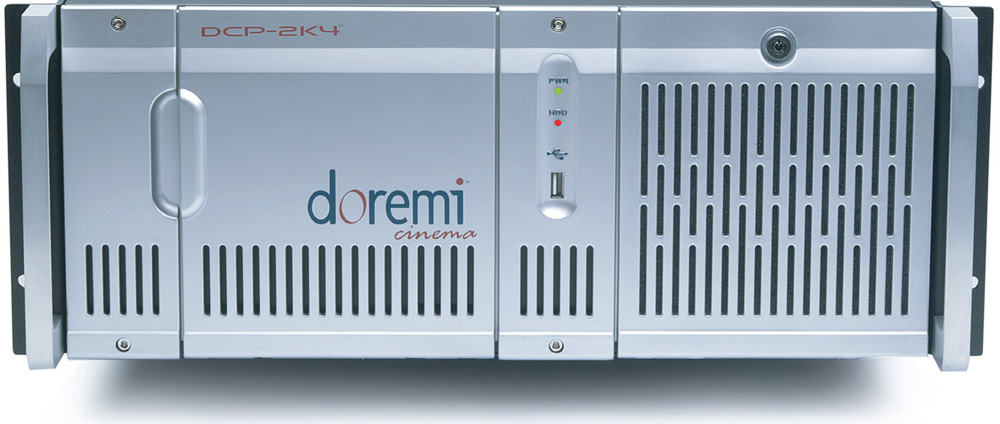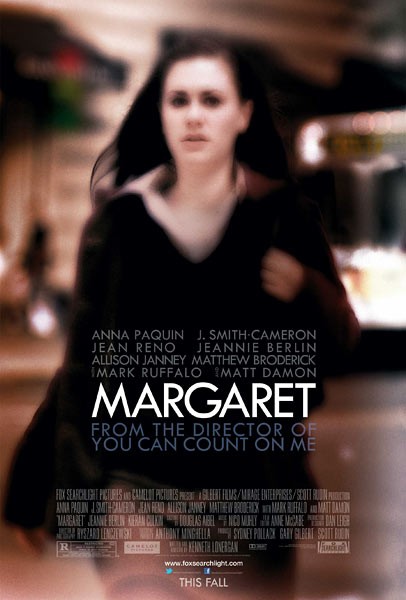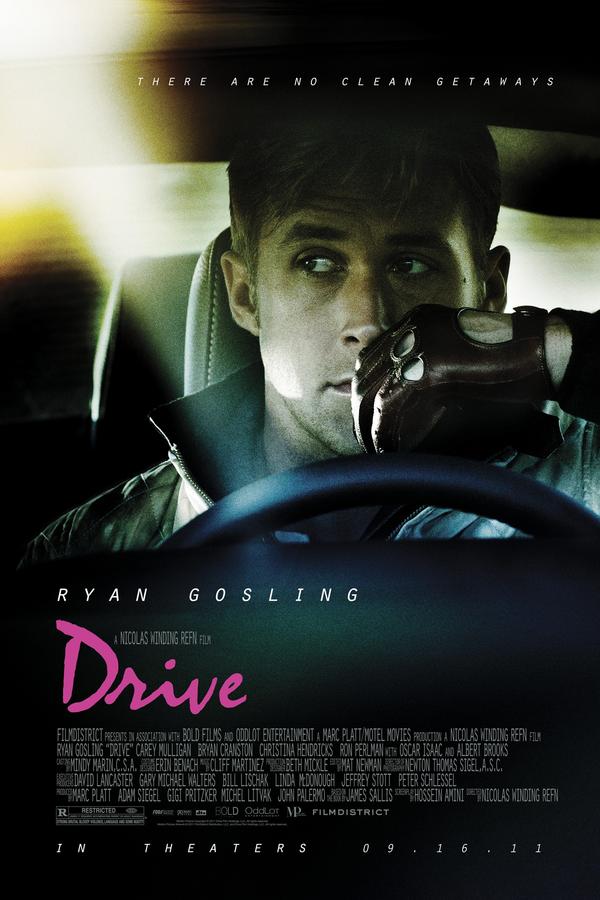 You might get the impression from the films we program at the Northwest Chicago Film Society that we aren’t especially interested in new cinema. Actually, though, we don’t show films from the 1930s to retreat into an uncomplicated past, to shut ourselves off from the present. If anything, we’re often interested in these films for the way they challenge our complacency about received history (of cinema and of society) and the trite frameworks that homogenize cultural experience.
You might get the impression from the films we program at the Northwest Chicago Film Society that we aren’t especially interested in new cinema. Actually, though, we don’t show films from the 1930s to retreat into an uncomplicated past, to shut ourselves off from the present. If anything, we’re often interested in these films for the way they challenge our complacency about received history (of cinema and of society) and the trite frameworks that homogenize cultural experience.
To that end, we have a lot to say about this year’s movies, too.
Just what it meant to go to the movies in 2011 is hardly straight-forward. The irreversible shift from 35mm projection to wholly digital presentations continued apace, with digital penetration breaking fifty percent of American screens sometime in the first half of 2011. We have much to say about the digital conversion and its ideological implications elsewhere, but let’s focus on its most salient results.
DCP (the Digital Cinema Package, or files uploaded from a studio-owned hard drive to an exhibitor-owned local server and beamed to projector) has wholly remade the infrastructure of film distribution. A sub-contracting agreement between Deluxe and Technicolor has centralized key operations to an extent hardly imaginable a few years ago. All major 35mm release prints are now made at a single Deluxe facility, with a noticeable decline in quality control. Instead of striking every reel from a 2,000-foot roll of raw stock, it’s not uncommon now for the lab to join together a few leftover 600- or 700-foot raw sections to service a single reel during printing, with quite prominent ultrasonic splices protruding mid-frame and appalling density fluctuations appearing mid-reel.

Technicolor now handles all 35mm distribution and logistics for new prints, which means that Deluxe has shuttered all of its regional depots save for the central hub at the Van Nuys Airport. In practical terms, this means anyone booking a repertory print must now pay shipping to and from Los Angeles, rather than simply returning the print to the nearest local depot. Local couriers who sub-contracted delivery of these Deluxe depot prints are all but gone.
In other words, 35mm prints have become more expensive to obtain and often less satisfying to view in proportion to that effort. Lab closures and consolidations overseas have made prints of new foreign films more expensive as well, leading indie distributors to a particularly difficult crunch. Digital distribution to the rescue –but for the fact that DCP has seen woeful penetration among independent and small-time exhibitors.
DCP promises a single and uniform standard for digital exhibition—but only, of course, for those who can afford to shell out for the system. Many important new films are prohibitively expensive to release on 35mm—this year’s Mysteries of Lisbon or last year’s Carlos, being two prominent (and universally acclaimed) art house examples. So exhibitors offer them in two formats: DCP for the sufficiently capitalized venues and Blu-ray for everyone else, which is the super-majority of American art houses. But Blu-ray—especially when it’s a disc burned on someone’s computer, rather than manufactured as a consumer product—is a fairly unreliable and glitchy format.
Some companies, like Emerging Pictures or IndieFilmNet, have stepped in and pitched theaters on a sub-DCP solution for a substantial maintenance fee: a server and access to operas from La Scala and titles from select distributors like IFC/Sundance Selects. They can be projected with prosumer equipment, forestalling the purchase of an expensive new DCI-compliant 2K or 4K digital projector. But the major studios and their indie boutique labels, which require nothing less than fully compliant equipment, have not signed on with these sub-DCP solutions. In practical terms, this means that an art house might contract with Emerging Pictures to get access to the latest IFC release but without laying down any investment for continued access to things like Fox Searchlight’s The Descendants—the kind of semi-indie title that most venues need to book to stay open.
 For the moment, year-end art house tent poles like The Descendants are available in 35mm and DCP, but this complicated and costly parallel distribution system cannot last very long. The intricacies and confusions of the short-term solutions to this problem are necessary caveats to any discussion of the best movies of the year. A band of younger critics recently took to the Twitter-verse to pressure Searchlight into standing behind Kenneth Longergan’s Margaret, the six-years-in-the-unmaking project that was unceremoniously dumped in a literal handful of theaters earlier this year without the benefit of any advertising or critics’ screenings. (It played one week at the AMC River East, but you had to do a fair bit of sleuthing to find this out.) Two prints were struck and presumably some bookings were DCP.
For the moment, year-end art house tent poles like The Descendants are available in 35mm and DCP, but this complicated and costly parallel distribution system cannot last very long. The intricacies and confusions of the short-term solutions to this problem are necessary caveats to any discussion of the best movies of the year. A band of younger critics recently took to the Twitter-verse to pressure Searchlight into standing behind Kenneth Longergan’s Margaret, the six-years-in-the-unmaking project that was unceremoniously dumped in a literal handful of theaters earlier this year without the benefit of any advertising or critics’ screenings. (It played one week at the AMC River East, but you had to do a fair bit of sleuthing to find this out.) Two prints were struck and presumably some bookings were DCP.
But many independent and foreign films would be lucky to have two prints in circulation. Though the indie outlets (Kino, Zeitgeist, Cinema Guild, IFC, etc.) are doing their best to support venues that still screen 35mm, this often means an unpleasant calculus where film venues must wait longer and longer for the single circulating print to become available, especially when the venue is not in a major market or cannot promise more than a single evening’s engagement. Prints, once merely the means to an economic end, are now precious commodities that must be parceled out carefully lest a venue ruin the only copy in the midst of a run with a dozen other bookings on the horizon. Such a situation hurts both the distributor (who wants more bookings) and the exhibitor (who wants more to choose from).
To put L’affaire Margaret in further perspective, it’s not uncommon for other independent films to be released with comparable levels of fanfare. Though screener DVDs are plentiful for even the most obscure agit-prop doc, which wasn’t the case with Margaret until the Twitter episode, many other titles are not supported with once-deemed-necessary exhibitor material like posters and trailers. In the very least, Margaret received these. Meanwhile, FilmDistrict, a mysterious distributor that no one had heard of before this year, manages to open the Cannes-approved, Euro-nihilist neo-exploitation Drive on over 2,900 screens.
 In other words, we’re living through an unaccountable moment in the history of cinema, with questions of which movies get seen and which don’t dictated not by any overriding and meticulous capitalist conspiracy, but by the arbitrary fruits of a poorly-understood industry upheaval. (Of course, that the upheaval itself suggests various elements of collusion, cronyism, and control gets us right back to the conspiracy angle, but that’s the subject for another column.)
In other words, we’re living through an unaccountable moment in the history of cinema, with questions of which movies get seen and which don’t dictated not by any overriding and meticulous capitalist conspiracy, but by the arbitrary fruits of a poorly-understood industry upheaval. (Of course, that the upheaval itself suggests various elements of collusion, cronyism, and control gets us right back to the conspiracy angle, but that’s the subject for another column.)
My own viewing this year reflects this confusion. The menu included films shot and projected on 35mm (J. Edgar, Tuesday After Christmas), shot on 16mm and blown up to 35mm (Uncle Boonmee Who Can Recall His Past Lives), shot digitally but also distributed on 35mm (The Future, Melancholia), shot on 35mm and shown via digibeta tape (A Useful Life), shot on 35mm but seen at home on Blu-ray (Poetry), shot digitally and projected on sub-DCP equipment (Certified Copy, Cold Weather), shot on 35mm but screened on DCP (Crazy, Stupid, Love, Rise of the Planet of the Apes), shot digitally and viewed in 3D DCP (Hugo). I saw Tree of Life (which originated with a mix of 35mm, 65mm, and digital cinematography) twice—once on DCP and again in 35mm. Colors were more vibrant in the former but more evenly balanced in the latter. Ironically, the digital effects looked more convincing in the film version.
To complicate matters further, most every film shot on 35mm these days goes through a Digital Intermediate, which subsumes many traditionally analog post-production tasks like sound editing and color correction. The final, approved Digital Intermediate is the ultimate source for both the 35mm and DCP release versions. So, regardless of what we see and how we see it, it likely includes some mix of film craft and digital technique.
Difficult as it is to navigate this transition and grapple with what it means, the past year was certainly not bereft of notable films (especially when one counts many titles that screened on the festival circuit in 2010 but did not receive a regular theatrical engagement in the US until 2011.) I’ll examine a few of them in this space next week.
UPDATE: This article has been updated to address comments from Ira Deutchman of Emerging Pictures, specifically the characterization of Emerging-approved digital projectors as ‘prosumer’ equipment. All parties agree that these are not true D-Cinema machines–and indeed, that’s the appeal, as it allows art houses and other specialty venues the ability to screen digital content without the heavy cash outlay required for DCI-compliant equipment. Deutchman prefers the term ‘i-cinema,’ which distinguishes Emerging’s package from the amorphously defined e-cinema (e for electronic), which truly does describe everything from a tabletop conference room projector to a basement home theater system–basically, anything that you can aim at a movie screen. (It should be noted that ‘i-cinema’ is Emerging’s coinage and is not in general use.)
While the 3-chip DLP projectors that Emerging promotes are indeed more expensive than most home systems, they are still far removed from standards-based, DCI-compliant equipment required by the studios. And ever-improving prosumer equipment is catching up to, if not exceeding, the baseline specs that Emerging quotes for ‘i-cinema.’ (Emerging advises venues that 720p machines and 10-12GB files are adequate for large-screen projection, though consumer Blu-ray Discs carry content that is 1080p and 25GB.) Emerging is undoubtedly providing a useful service to many smaller venues, but their aims are explicitly separatist, encouraging art houses to take a path incompatible with Hollywood product. (This isn’t an interpretation or opinion. The ‘i-cinema’ think piece begins as follows: “Art house cinemas would clearly benefit from a different digital cinema standard than mainstream Hollywood studio films and commercial multiplex exhibitors do.”) Whatever its faults, 35mm was a universal standard; the digital alternative continues to splinter.
